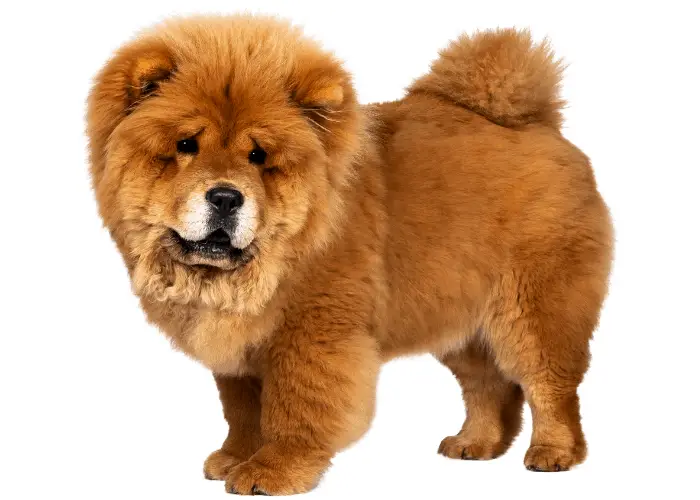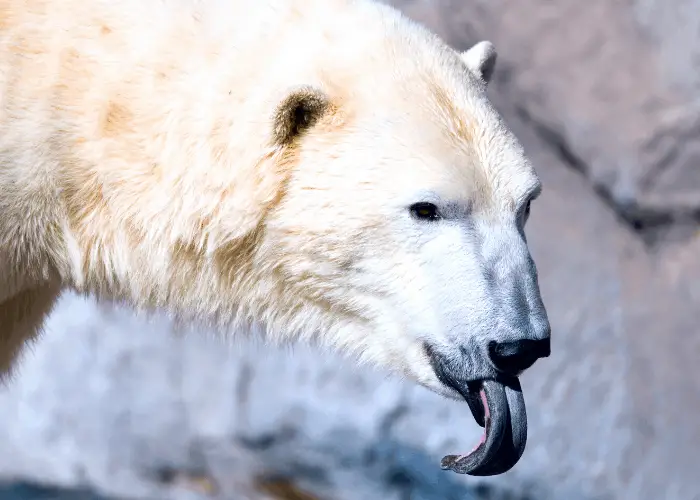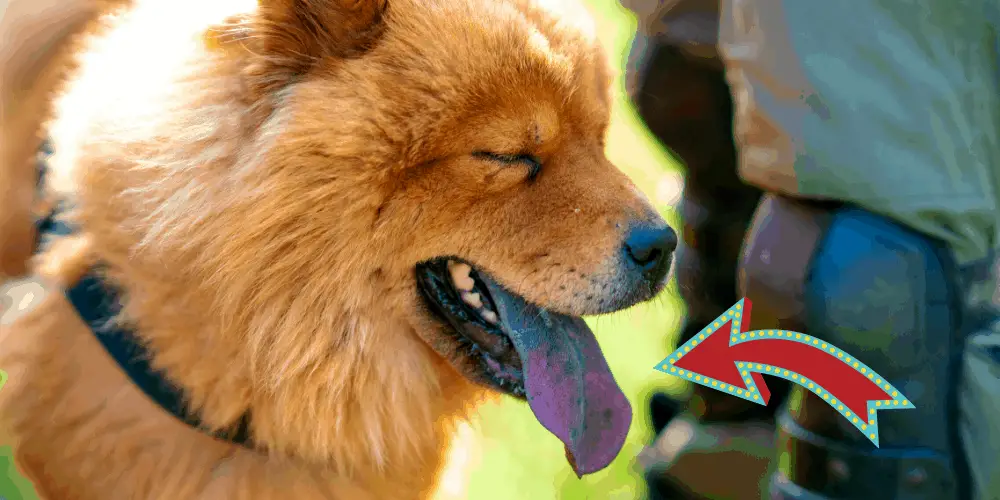Dogs are wonderful, quirky and unique creatures. They come in all shapes, sizes and colors.
Each breed has an identifying marker. Dalmatians have their spots, Rottweilers have their ginger eyebrows and Chow Chows have unusually colored tongues.
So, what is the reason why Chow Chows Have Blue-Black Tongues?
An increase in pigmentation causes Chow Chow’s blue-black tongue. It is a question experts and scientists have long tried to answer, but there is no scientific reason or advantage to having a blue-black tongue.
For us humans, extra pigmentation shows as birthmarks and freckles. In the Chow Chow and other breeds, sticking their tongue out shows as spots on the tongue or a complete blue-black tongue.
How does having a dark-colored tongue become an advantage? Perhaps it comes from the country they originated.
Origins

The Chow Chows is an Eastern Asian breed, believed to be descended from China and the Simocyon in Northern Mongolia.
This animal has shared similarities with modern foxes and small bears. One of the main distinguishing characteristics was that it had 44 teeth.
Chow Chows also have 44 teeth, although they lose this extra pair in adulthood. All other dog breeds are born with 42 teeth.
Other small bears from the same region have the same blue-black tongue as the Chow Chow.
It could be that the frigid temperatures of their homeland meant having a dark tongue reduced heat loss from panting. It is known that white reflects heat, and darker colors absorb heat.
Pink At Birth

Chow Chow puppies are not born with colorful tongues. At birth, their tongues are pink, like most other dog breeds.
At around 8-10 weeks of age, the blue-black pigmentation starts to develop. The Chinese Shar-pei is the only breed to develop the same coloring commonly.
However, even these two breeds do not exclusively have blue-black tongues. Some only develop a covering of colored spots and retain the pink coloration over the rest of their tongue.
It is a common misconception that the Chow Chow and Shar Pei are the only breeds with any blue-black coloring.

Large breeds like the Bull Mastiff, Newfoundland, and Great Pyrenees also tend to develop some tongue pigmentation.
For these breeds, the coloring is not as strong or may only develop spots of blue-black color.
This extra pigmentation may also show in other large breeds, such as Retrievers, Setters, Rottweilers, Akitas, and German Shepherds.
It is less common, but not unheard of, for some small breeds like the Pomeranian to display blue-black tongue coloration.
Interestingly, as Chow Chows reach their senior years, their blue-black tongues begin to lose the pigmentation, slowly turning their tongues back to the pinkish color they were at birth.
Purebred or Mixed Breed

Due to the Chow Chow being such an old and well-established breed, their uniquely colored tongue helps us identify purebred Chow Chows from those crossed with other breeds.
A Purebred Chow Chow will always develop a blue-black tongue between 8 and 10 weeks of age. A Chow mix may develop spots of blue-black or no spots at all.
This method of identifying purebreds and crossbreeds is unique to the Chow Chow. No other dog breed can have its pedigree determined by a factor as simple as tongue coloration.
Blue-Black In Nature

This bizarre tongue coloration is more common in wildlife than people realize.
So many different animal species have this unusual coloring. Some are well-known, and the reasoning has been proven. For others, the blue-black tongue is still a mystery.
Large mammals like Giraffes, Okapi (same family as giraffes), and Polar bears all have blue-black tongues. Some are paler tones, while others have almost black tongues.
For the Polar Bear, it is widely believed that the darker tongue color helps reduce heat loss from the body due to living in such cold temperatures. For Giraffes and Okapis, the reason is unknown.

They may have a higher number of pigmented cells than other animal species.
Livestock also frequently show darker tongues. Although most farm animals tend to have pink tongues, it is common for many cows, sheep, and goats to be born with purple or blue-black tongues.
Birds, particularly parrots, also often have dark-colored tongues. Birds like the Macaw and similar parrot species have large blue-black tongues. Again, the reason is unknown, and an advantageous reason may not exist.
RELATED ARTICLE:
Conclusion

Speculation for this unusual adaptation has been ongoing since the Chow Chow was first brought to Europe in the 1500s.
There have been many theories shared to try and unearth this particular mystery; however, it may be one that we will never truly know.
Since evidence suggests this breed was around before the Han Dynasty of 202 BC, we may never uncover the truth about this fascinating genetic quirk.
You might like to read our article about The Red dog from China
References:
Brearley, J.M & Draper, S. (1992) The World of the Chow Chow, TFH Publications
Draper, S. (2004) Chow Chow- A Kennel Club Book, Kennel Club Books
Rushing, A. (2015) Chow Chows Revealed: All you ever wanted to know about the reclusive Chow Chow, Independent Publishing Platform
Triggs, J. (2015) Chow Chow Training Guide, Independent Publishing Platform
Wilcox, C. (1999) The Chow Chow, Chapstone Press: Minnesota
Various Authors. (2010) The Chow Chow – A complete anthology of the dog – Vintage Dog Books


